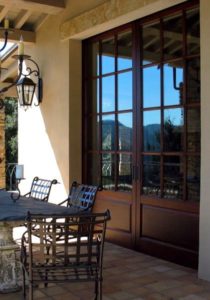
Easily one of the most popular hardwoods in our inventory has been Sapele. Each day we get requests for quotes and the Sapele species page on this site is one of the most clicked on. Where is Sapele wood from? Sapele is from Africa. That’s about as specific as you can get because it grows in abundance all across Africa and is popular because of the ease of use in so many applications. Sapele has long been a known entity by the windows, doors, and siding manufacturers. The more customers we expose to this wonderful hardwood, the more people who are blown away and start requesting it regularly. This article is an attempt to highlight some of the pluses of using Sapele and in many cases introduce it to the builder or contractor that may have only heard of it.
What is Sapele Wood?
Sapele is a large hardwood tree naturally that has a widespread growth range across Africa. It is common for the trunk to exceed 6 feet in diameter and it has a very straight trunk with little to no branching below 80 feet. This yields very straight grained, wide and long lumber in great abundance per log. With such a large resource to harvest from, it remains easy to get large amounts of Sapele throughout the year. This availability will keep costs down as well as make it a species you can consistently rely on getting for your projects.
What is Sapele Wood Used For?
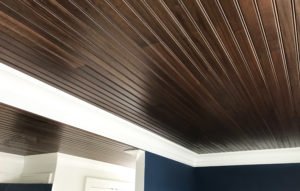
Sapele is hugely popular with door and window manufacturers due to its hardness and close grained texture making it perfect for intricate joinery. Its rot resistance means you find it both in interior and exterior doors, windows and siding but also all kinds of millwork applications like cabinets, crown moldings, and even flooring. But far and away the common use for Sapele is as exterior cladding and trim. We feature Sapele heavily in our Alpha Destinations line and 6 of those products use it as the base species. It may seem a shame to cover up the beautiful grain but it seems as if our priming line is always running some kind of Sapele trim pattern too. Sapele has quickly become the go to replacement for generations of Genuine Mahogany usage and in many cases is a superior solution for cabinetry and furniture due to the clear nature of the tree providing wide and long boards with next to zero defects. Painted or left naturally it is an attractive species and highly durable for just about any situation you can throw at it.
Mahogany Sapele is Highly Stable Lumber
One of the most common questions we hear, “is Sapele a hardwood or softwood?” Usually this is because Sapele is known as an exterior wood and so many good exterior woods are also softwoods. The funny thing is that the botanical definition of hardwood and softwood has nothing to do with how hard the wood actually is; but rather it denotes the structure of the tree and in general whether or not it loses its leaves. Sapele is technically a hardwood or a deciduous tree. But to answer to more common question it is also a quite hard wood when you compare it to the typical North American species, and much harder than much of the typical exterior woods like Cedar and Cypress. Sapele wood is of medium hardness with a Janka rating of 1510 lbs making is harder than most domestic North American Species and almost twice as hard as Genuine Mahogany. Additionally Sapele grows with an interlocking grain pattern where the fibers twist around the tree as they grow. While the grain pattern is still moving in the same direction, the interlocking pattern acts to cancel out a lot of movement that is typically found across the grain. This hardness and medium density as well as propensity for straight grained boles (central trunk of the tree) makes Sapele wood very stable and thus predictable from the moment it is felled to when it is pulled from a drying kiln.
This lumber travels a long distance and much can happen to the wood from shipping damage to climate change induced movement. The natural superior stability means that there is much less waste over this journey as well as reliability once the wood is installed in it’s final project.
Sapele vs Mahogany
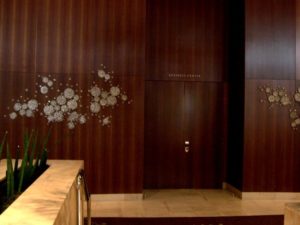
Sapele lumber is often marketed as a type of African Mahogany. In some ways this is true since Sapele is in the Mahogany family, Meliceae. The issue here is there are many species that get lumped under the African Mahogany moniker. “Mahogany” tends to get thrown onto all kinds of things to make them more luxurious or expensive so Mahogany Sapele and Sapele Mahogany are names that show up quite a bit in trade manifests and architectural specifications. This is a disservice to the average buyer however because when you look at Sapele vs Mahogany (the genuine, South American stuff) there is really no comparison. Sapele is quite a bit denser and nearly twice as hard. Not all of the Mahogany labelled species behave as well and they vary dramatically in density, color, and stability. However, the comparison to Mahogany as an outstanding exterior grade wood that has a rich reddish-brown heartwood holds true. Sapele is most often used as a window and door material because it is so stable and almost completely rot and weather resistant. The grain and pore structure is tighter than Genuine Mahogany so Sapele also serves as a great substrate for painted surfaces. When quarter sawn, the interlocking grain pattern aligns to form beautiful ribbon striping that is often seen in door panels and plywood veneer. The quarter sawn Sapele is even more stable as well as stunning in appearance and that makes for a pretty attractive product.
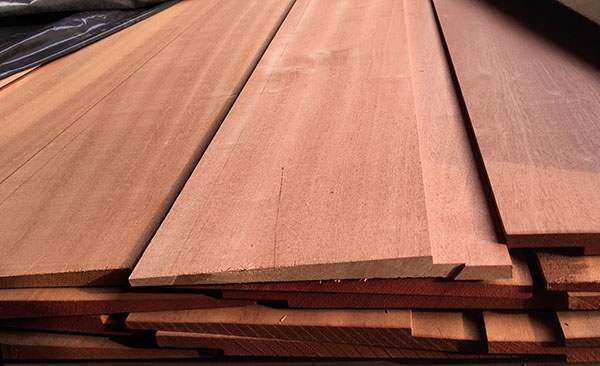
Sapele Mahogany is Highly Sustainable and Verifiable
Unfortunately like many lumber species that get “discovered” and become popular, over harvesting can be a problem. Much of Western Africa ran into this problem and Sapele is still recovering. Due to greater awareness and strict controls, the species is recovering nicely. Sierra Leone has created plantations as has Cote d’Ivoire. The Congo is one of the greatest producers of Sapele and while the area is in political turmoil as of late, the logging companies have embraced strict regulation and verification schemes like TLTV and VLO. We buy all of our Sapele from TLTV stock giving us document-able and verifiable chains of evidence showing the tree was responsibly harvested from a sustainable area. This certainly gives our customers peace of mind when it comes to legislation like the Lacey Act, but the level of detail also ensures that the buyer knows what they are getting. African Mahoganies are often lumped together so many species can be present in a single shipment. Without careful buying and documentation, one could be getting several species that won’t necessarily perform as well as Sapele.
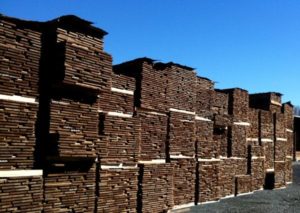
Sapele is definitely the cream of the African Mahogany like hardwoods in performance, stability, and appearance. We feel certain that the popularity will continue to grow as other industries begin to recognize it’s potential. We are so certain in fact that at any given moment you will find 400-600,000 board feet in stock on our yard with a constant stream of inbound stock to be carefully dried by us and prepared for sale in North America. Whether you buy Sapele lumber from J. Gibson McIlvain or another supplier, pay close attention to the provenance documentation to ensure that you are in fact getting Sapele as compared to another similar species. It might surprise you how often this is overlooked. More importantly, the legality and sustainability documentation is included to show where the tree came from. Sapele is a valuable resource and it is imperative we continue to treat it as such so this highly popular species won’t become difficult to obtain thus sparking questionable harvesting practices. Always buy Sapele wood from a dealer that understands the provenance as well as how to properly dry and mill it. This attention to detail will keep the good suppliers, importers, and sawyers in business and only serve to close the market on those that abuse the resource.



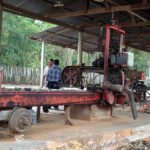
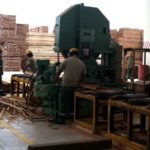
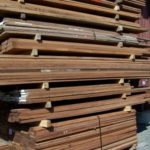
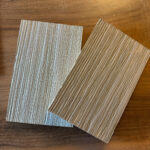


How about the appropriated moizture content for sapeli both green and dry?
Tabonar, check out our Sapele page and the chart on the left details all the specifications you could want to know about Sapele. What is an “appropriate” moisture content really depends on where the Sapele will end up. In North America we aim for 6-8% moisture for all our woods. Europe is a bit higher around 12-15% due to a wetter climate. Green is a relative term too as there is just cut where most trees will run upwards of 80% moisture and then there is green as in wood that was cut months ago but has not been sawn. Still 30% and greater is common. Regardless, the appropriate percentage all relies upon what you want to do with the wood and in what environment (exterior, interior, local/regional climate, etc)
Hi
I am looking for timber similar to Sapele for wooden toy manufacturing. Is there any alternative species that is FSC certified and has similar look of sapele any chance?
Thank you.
Hi. I heard that Apple Tree has similar look to Sapele. Is it true? If so, which species are the easiest to access and competitive priced with FSC or PEFC certified?
Your help would be greatly appreciated. Thank you.
Jim, it is possible to get FSC Sapele though a lot of mills in Africa prefer TLTV and/or VLO certifications. As far as similar species, Utile is in the same genus and almost identical. Any of the Mahogany alternates are a good choice as well, you just need to figure out what qualities suit your project best and make decision from there. FSC is usually obtainable but it will drive up the cost and decrease the availability.
Not sure of your source, but Apple is nothing like Sapele in appearance, grain, workability, and availability. It is however a glorious wood to work with but not commercially available anywhere I know of. The best way to get it is through micro mills that will saw a log you bring to them.
I have a home in NE Fl on the ocean…….my contractor used Sepele on my garage door and shutters….what is the proper stain or sealer to use on the wood……….obviously a hot, wet, damp and cool winter environment…………w lots of sun. Any Suggestion?
Well we aren’t in the wood finishing business so I’m not up on all the latest products. However I can recommend any Epifanes products based on personal experience or a good quality spar varnish. Regardless, nothing will stop the sun from fading the wood and annual maintenance is always suggested to keep the wood tone. The good news is that the other climate factors won’t phase the Sapele regardless of the finish you apply. So concentrate on UV resistance in whatever finish you choose.
Gentlermen:
I have a customer that wanted one of my custom flintlock rifles made from a wood from Zimbabwe since he spent lot of time there, the closest I could come to that was Sapele. The rifle is now complete and I stained it dark reddish brown with a London oil finish. I found it a little softer than the curly sugar maple I am used to but it took carving fairly well although a little stringy. Hardly the traditional wood for a Lancaster county style Flint Rifle.
Yours aye
John Edward Clark Gunmaker
I would love to see a picture of that rifle John; sounds beautiful!
HI – I am thinking about using the African Sapele in a dining room, living room entry hall. we have dogs. Will it scratch and show a lot of nicks. Can it be used in a high traffic area?
Thank you for the information
As a fellow dog owner I feel your pain. I think one of the best things you can do to protect your hardwood floor from claws is a good finish. Yes a very hard species is nice but what you really want is to prevent claws from ever even getting to the wood itself. That being said, Sapele is a good choice as a beautiful and very durable wood. Then talk to your installer or do some research on dog friendly durable polyurethane finishes. When I had my floors refinished about 10 years ago I specifically used a contractor that had 4 Rottweilers and had a finish he recommended. I wish I could tell you what it was, but it slips my mind. More than likely it wasn’t so much a special formula but just his application process. 10 years later the floor looks great despite what my 100+ pound dogs can do to it.
Hi Shannon; I’m thinking of using Sapele for furniture, such as a wine rack/table. Would it be O.K.
Tom
Absolutely. I can’t tell you how many people we sell Sapele to who intend to use it for furniture.
I have built and installed sapele handrails on the exterior of my boat. I plan to leave them unfinished and let them weather naturally like is often done with teak. How will the sapele weather if left unfinished? Thanks , Dave
I have yet to find a wood that does NOT turn silvery gray when left to it’s own devices to weather. Sapele does just the same and it looks nice. There is always a risk of some minor surface checking for the stuff that gets a lot of sun baking on it all day, but that is pretty much the same with any species out there. A finish will control that to some extent and still allow the wood to turn gray over time. So applying a single coat of an exterior finish, preferably oil based, might be a good idea just to ease the wood into its new environment.
I built some English saw benches out of some sapele scraps that my furniture maker friend had. When finished, I applied some Watco Danish Oil for Teak. It turned some pretty nice looking benches into works of art. I could not believe the beauty of and depth of the grain and color. A beautiful wood. I look forward to doing other projects with it. Just beautiful!
Shannon, you write some very informative and cool articles. However as a furniture manufacturer in Africa a long time back and a boat builder in the USA now, your title is very miss leading. I see you correct it later with “mahogany like hardwoods” Make no mistake is is a very attractive timber and takes numerous stains and finishes well, it is not a mahogany and does not display any similar physical characteristics other than looks.. Sadly I am told changes in logging policy make it very difficult to procure Khaya logs so the 4mm veneer we used in boat building has been replaced in the market by sapele ….just not the same, weights, density, and especially shrinkage and movement. Great for furniture and joinery but not boats – Ed
We are considering using Sapele for our kitchen countertops . We love the look of it, but we are concerned about how it would cope with water, especially around the sink. Do you have any experience of using the wood for this purpose, or have any advice about keeping it well maintained and free from mildew?
Sapele is a good exterior wood and deals with moisture quite well. But in your application there could be substantially more moistures for longer periods of time. I do think the wood will handle it well, but it is really more about the finish you choose in this case. You wouldn’t leave the wood raw regardless of the species used so a good finish will take up the slack. I would look at marine varnishes that are designed to deal with lots of moisture. A good marine varnish will do great even over top of a wood that isn’t a good exterior product.
I recently purchased sapelle wood for a flooring job, 4 inches wide was wondering if it is compatible with radiant heat?
Of course it would be compatible. Sapele won’t be any different than any other wood flooring species. Just follow the installation instructions for the flooring, including the recommended acclimation period and any instructions included with the radiant heat system.
We love Sapeke and are lucky enough to have a good supplier near by. I was wondering if it would be suitable for a dining table? Is it hard enough? With enough Urethane? I think this would look fabulous.
Opinions are welcome.
Absolutely. We have had a Sapele dining table in our office conference room for several decades. I don’t even think you need to overdo it on the finish coats to maintain the durability. Sapele is a bit harder than Hard Maple and that has been a defacto dining table material for many years.
If a sapele porch floor has not had a finish applied and the front half has been exposed to the weather and is turning grey, can the wood be sanded to return it to the original color before applying a finish to the entire floor?
Yes sanding will return the color, though I would suggest sanding the entire deck or you may have trouble blending the two halves.